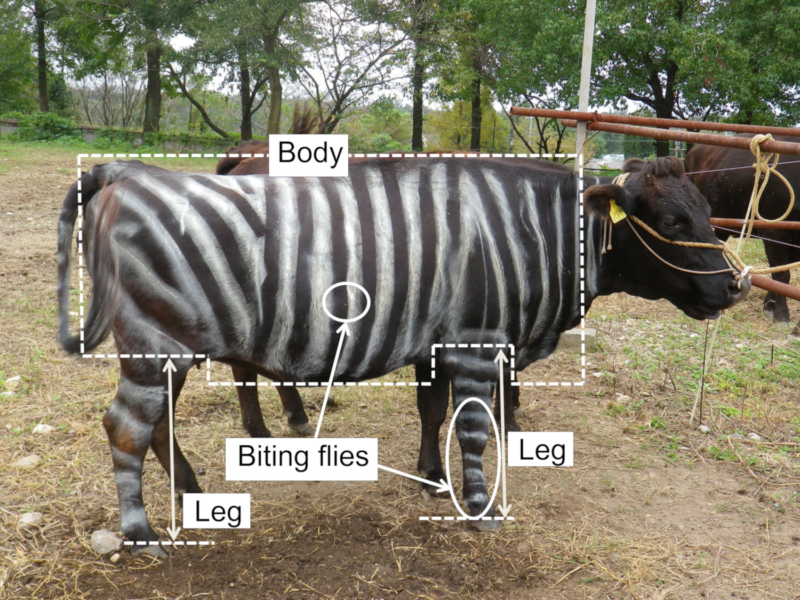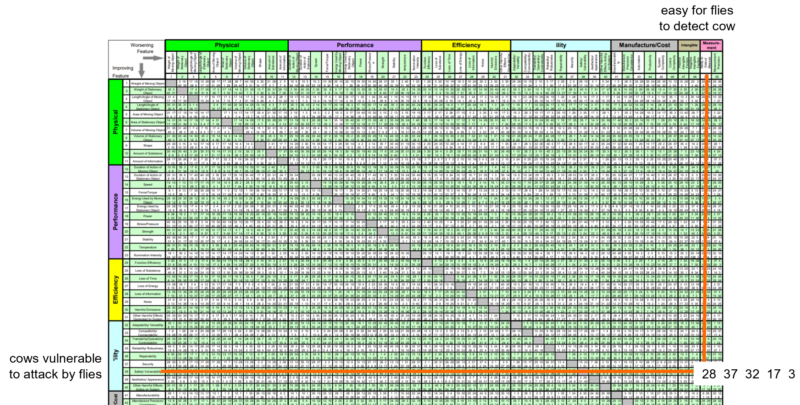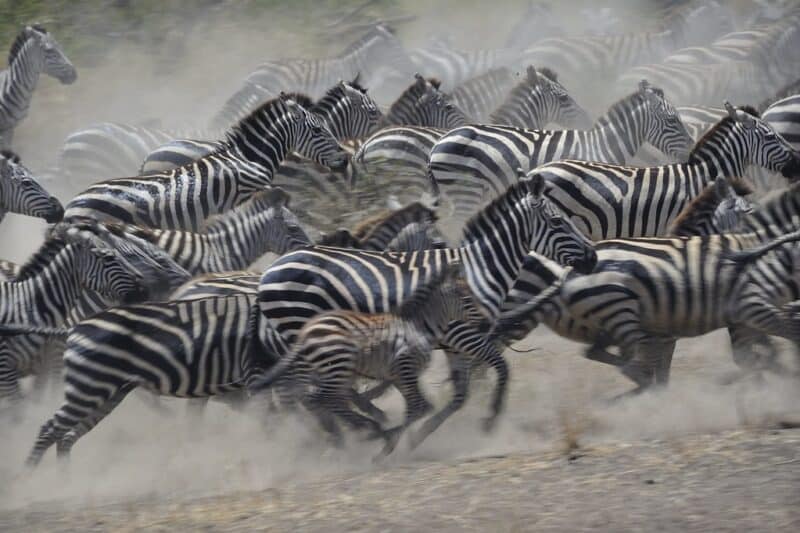
It’s a cow. I know. But it’s a cow that happens to provide another important clue as to why zebras have stripes. The first thing the SI research team encountered (SIEZ, Issue 113) was the fact that the stripes acted as camouflage and confusion against big predators: when running the stripes turn into a savannah-coloured blur. Principle 19 evolutionary genius.
Now, thanks to some recently published Japanese rearch, we also know the stripes help protect the zebra against much smaller predators. Namely, flies. Here’s what the researchers’ slightly surreal (insert image of lab-coated scientist painting stripes onto a cow here) experiments have revealed:
Experimental and comparative studies suggest that the striped coats of zebras can prevent biting fly attacks. Biting flies are serious pests of livestock that cause economic losses in animal production. We hypothesized that cows painted with black and white stripes on their body could avoid biting fly attacks and show fewer fly-repelling behaviors. Six Japanese Black cows were assigned to treatments using a 3 × 3 Latin-square design. The treatments were black-and-white painted stripes, black painted stripes, and no stripes (all-black body surface). Recorded fly-repelling behaviors were head throw, ear beat, leg stamp, skin twitch, and tail flick. Photo images of the right side of each cow were taken using a commercial digital camera after every observation and biting flies on the body and each leg were counted from the photo images. Here we show that the numbers of biting flies on Japanese Black cows painted with black-and-white stripes were significantly lower than those on non-painted cows and cows painted only with black stripes. The frequencies of fly-repelling behaviors in cows painted with black-and-white stripes were also lower than those in the non-painted and black-striped cows. These results thus suggest that painting black-and-white stripes on livestock such as cattle can prevent biting fly attacks and provide an alternative method of defending livestock against biting flies without using pesticides in animal production, thereby proposing a solution for the problem of pesticide resistance in the environment.
From a contradiction-solving perspective, the stripe solution (a combination of Inventive Principles 32 and 3) seems to correspond closely to the usual strategies deployed by human problem solvers:

It’s still not clear why the stripes put off flies, but that shouldn’t stop us from wondering at the fact that the zebra has managed to evolve a single solution that stops both lions and flies.

